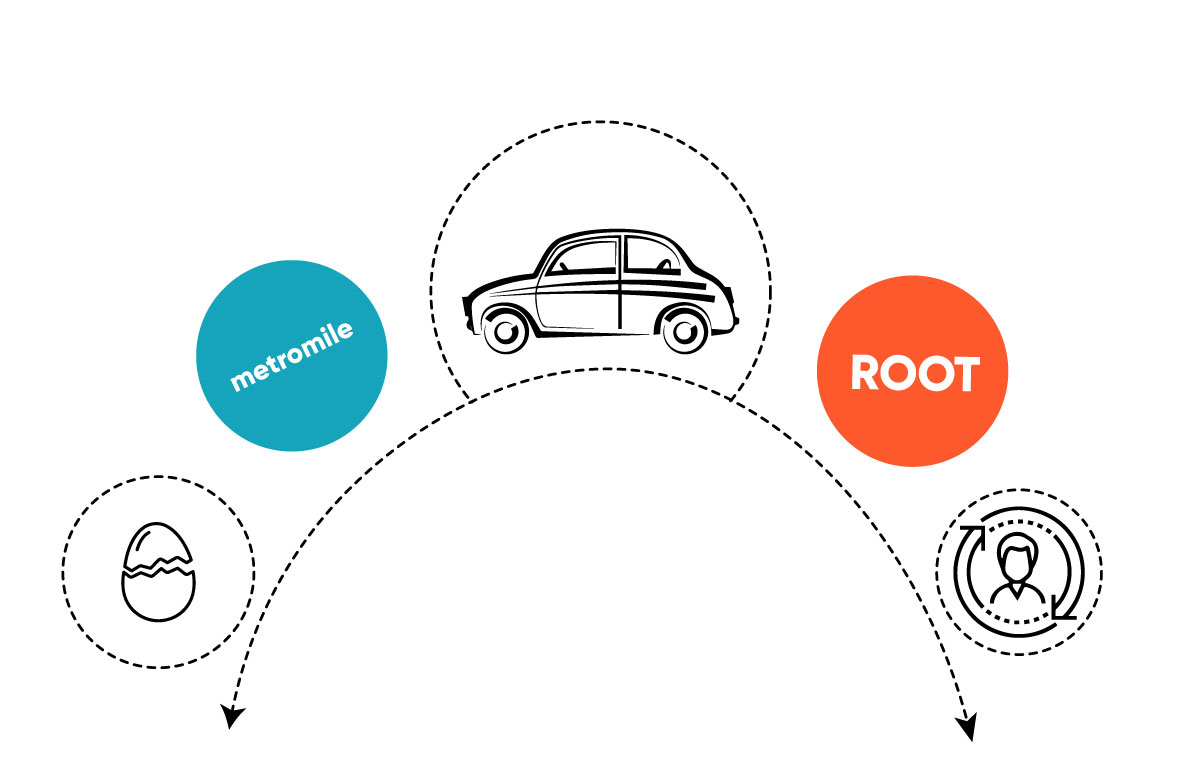The story behind Metromile’s layoffs
On the week of April 6th, Dan Preston, the CEO of Metromile, one of oldest insurance startups, told employees that cuts need to be made in order to achieve a 2-year runway. As a result, around 50 employees were laid off, including the entire marketing team, and around 50 employees were furloughed. “Given economic uncertainties as a result of Covid-19, we’ve made the difficult decision to furlough some employees and part ways with others,” Metromile said in an emailed statement. The company went on to say that from its earliest days it focused on strong unit economics, disciplined financial stewardship, and a deliberate approach to growth. However, for some startups, the strongest unit economic is the ability to close another funding round, and when that is in question, you end up seeing just how fragile some startups are.
2020 was supposed to be a big year for Metromile. The company recently moved to a new office space, going from 15,000 square feet to 28,000. It had a goal of reaching 20,000 policies in Q1, 2020 (Metromile ended up selling 11,000 policies). And a new product similar to Root’s is in the works. But the company’s big year is off to a bad start. Before COVID-19 forced us to shelter-in-place, Metromile had a ~$100 million term sheet from a foreign insurer, which is now paused or off the table (depends on who you’re asking). The company was able to get a new commitment from existing investors for ~$50 million, but that’s only half the amount it looked to raise which led to the recent layoffs.
While layoffs took place in April, Metromile’s efforts to reduce costs began in January when management decided to cut all marketing spend after hiring a new team to lead their ambitious growth plans. Their most notable hire, Bhanu Pullela, joined in January 2019 as Chief Marketing Officer from Wells Fargo where he served as SVP of acquisition marketing for its credit card business. Pullela, who left Metromile after just 7 months, is one of four people who held the CMO role at Metromile during its ~9 years of existence. “We hired some new marketing leadership in the middle of 2019 to set us up for growth this year, as we had achieved strong profitability thresholds. As we began to scale the new strategy, we decided to shift some of our marketing investment to meet internal profitability guidelines because, like other insurance carriers, we are always balancing growth and profitability,” Metromile said in an emailed statement.
Similar to other insurance startups, Metromile has been occupied with the ultimate question: Are they a technology company? Or are they an insurance company? “What’s been really critical in getting all this right is that we’re trying to be a different kind of company,” Preston shared in a recent interview with Carrier Management. “It’s not just an insurance company. At its core, it is a technology company and an insurance company as one.” But while Metromile may have found a middle ground (some think they haven’t), they seem to have forgotten that in order to grow, they need marketing and market expansion.
In September 2014, Metromile was available in four states: California, Oregon, Washington and Illinois, and Preston said that expansion into more states, including New York, is planned for the coming months. As of April 2020, Metromile is only available in 8 states: California, Washington, Oregon, New Jersey, Virginia, Pennsylvania, Illinois and Arizona. One source told me that management is focused on profitability and growing the right way. Indeed, their loss ratio is something to brag about but their combined ratio is not. Because when you sit on your eggs for too long, they start to crack.
Metromile’s direct premiums written, loss ratio and combined ratio
| Direct Premiums Written | Loss Ratio | Combined Ratio | |
| 2019 | $103,282,510 | 77.63% | 187.86% |
| 2018 | $87,242,636 | 85.55% | 146.52% |
| 2017 | $52,781,128 | 85.73% | 128.35% |
Source: S&P Global.
Since 2017, Metromile hasn’t experienced significant growth and the increase in premiums was mostly driven by a rate increase. According to company sources, management prioritized tech and product over marketing. Based on data from an upcoming Coverager report (for members only), out of approximately 345 people that worked at Metromile for some portion of 2019, 64 were engineers, 28 worked on the product, and 14 were in the data science department. On the other hand, there were 17 marketing folks. “We’ve been thinking a lot about not just offering a better price, but thinking about what are the moments in time where you need more support from your insurance company,” Preston said in an interview. “This is why from the very beginning we’ve had an app that helped people with avoiding parking tickets and diagnosing car issues – some of these things that are going beyond just that claims experience or just the price.”
Overall, Metromile paid at least 11,623 months in individual payroll since launching to reach ~$103 million in direct premiums written in 2019. When you multiply this amount by a modest average monthly payroll of $10k (consider benefits and the relatively high salaries of engineers), you’ll get to $116,230,000, and that’s without claims, marketing, rent, and supplies. Of course, the company began as an MGA and they also have an enterprise product, but Metromile’s main dish is its direct-to-consumer offering, and it has cost them a significant amount.
Some believe that your product is your best marketing, and if that’s the case, then a bad product results in bad marketing. Aside from the complexities associated with a pay-per-mile product which requires people to overthink what is typically a straightforward and simple purchase, the product itself was faulty and that hurt conversion rates. Metromile’s Pulse device, which plugs into a vehicle’s OBD-II, would sometimes not work either because the device was damaged or it got accidentally unplugged. There were also issues of people not receiving the device in time and miscalculation of miles. And in cases where the device was not able to track mileage, the company would automatically set the miles driven to the maximum amount, which increased the cost for policyholders. In addition, the online quote process wasn’t smooth and that’s one reason why around 40% of policies were sold over the phone.
COVID-19 didn’t just impact the company’s fundraising efforts, it also shrunk its revenue. Since Metromile’s rates are comprised of a monthly base rate and a per-mile rate, it is generating less revenue as people drive less. Of course, the company has experienced some organic growth due to the existing landscape, but this is temporary as not all new policyholders are low-milage drivers. Still, auto insurance companies are one of the few that don’t have a good excuse for firing people. While Metromile’s revenue is down, similar to other carriers that have been offering credits, claims are also down and the product is still required by law. If Metromile truly focused on unit economics, they should have been able to weather the storm given the fact that they’ve been in business for close to a decade while raising a considerable amount of money. Instead, the company needs a cash injection to pay for a half-empty fancy new office and to compete with Root and other tech providers offering an enterprise claims software, all while chasing the unattainable goal of building “the thing” that makes them “truly unique” in the industry.







